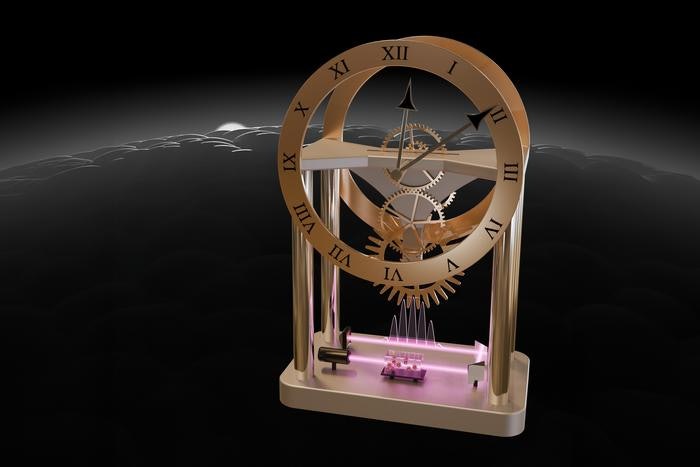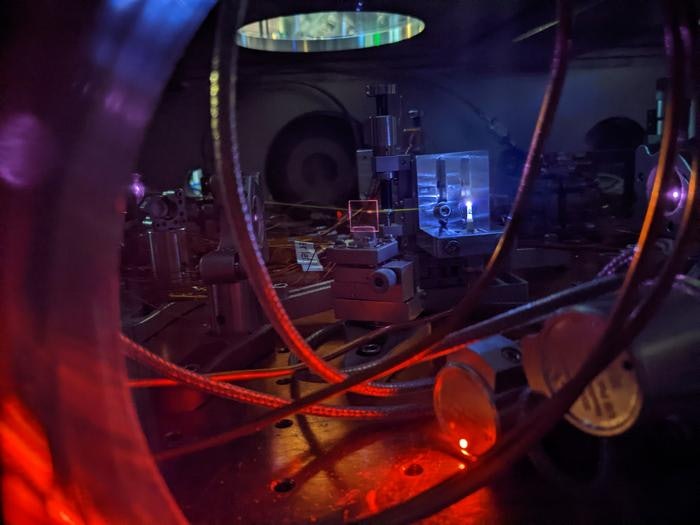
The nucleus of an atom is now the modern version of sand flowing through an hourglass.
Researchers have spent 15 years trying to increase accuracy in timekeeping. The U.S. standard currently relies on a metal isotope called cesium-133. But the cesium atomic clock, whose time error is about one second in a whopping 100 million years, has now been outdone.
"Imagine a wristwatch that wouldn't lose a second even if you left it running for billions of years," physicist Jun Ye, leader of the research team at JILA, a joint institute of the National Institute of Standards and Technology (NIST) and the University of Colorado Boulder, said in an announcement. JILA is home to one of the two teams involved in the new research, published Wednesday in the journal Nature.
Tick tock goes the clock
From shadows along sundials, to the swinging pendulums of grandfather clocks, to the ticking elicited from quartz inside wristwatches, humans have progressively discovered more accurate ways of counting time. In essence, they all rely on a rhythm. Accuracy is gained from measuring short and steady rates of change.
Measuring how Earth rotates around the Sun can help us tell time, but its not perfect. Earth wobbles in its axis, it takes an uneven orbit around the Sun, and a year doesn’t evenly divide into 24-hour days (hence, leap years). Pendulums are steady, but can slow down in warmer weather. So humans looked for something else. And in the middle of the twentieth century, the idea of the atomic clock was born.
The atomic clock used in modern timekeeping uses lasers to manipulate atoms of cesium-133 along a frigid shaft. Then microwaves blast into a huddled bundle of these atoms, and triggers their outermost electrons. A device measures their frequency. This value is a trillions-long digit frequency per second. And so, it’s a highly-accurate measuring stick for timekeeping. Much more refined than pouring sand.
Atomic clock goes nuclear

But there’s something more accurate than the electrons of cesium-133: the subatomic particles in the nucleus of thorium-229, a radioactive isotope of the metal thorium. Researchers found a way to harness it for timekeeping.
“You’re picking the natural resonances inside the atom. So essentially, it’s kind of a universal number,” Chuankun Zhang, a graduate student at the University of Colorado Boulder who collaborated on the project as part of JILA, tells Inverse.
For the first time, researchers have directly measured the laser frequency needed to trigger the thorium nucleus to be organized in a different way, also known as a new internal state.
“This allows [us] to probe details of the nucleus, like its shape change when it goes from one quantum state to another, with an accuracy that was never accessible in nuclear physics before,” Thorsten Schumm, leader of the other team that worked on this project from the Vienna University of Technology in Austria (TU Wien), tells Inverse via email.
What lies ahead
The point of a good clock is there is very little room for error in counting. But on top of that, the nuclear clock is good for other reasons, too.
The nuclear clock could be more sensitive to how dark matter, for instance, affects visible matter in the universe. It could also verify if constants of nature are truly constant. Theories of particle physics could be verified, and new discoveries may emerge.
The technology of a nuclear clock is now proven, but it’s still being refined. Zhang and Schumm said this new nuclear clock could be ready in one to two years.







